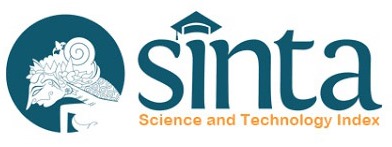An Estimation of Endogenous Formaldehyde Exposure due to Consumption of Indonesian Opah Fish (Lampris guttatus) in Three Major Export Destination Countries
Abstract
The demand for Indonesian opah fish as an export product is increasing in the international market. Three countries (Malaysia, Mauritius, and Taiwan) recorded as the leading export destination of Indonesian opah fish. However, as the fish kept in a frozen state during export transportation, the endogenous formaldehyde may increase over time. This research presented the health risk assessment of population in the leading export destination countries that consumed opah fish from Indonesia. The study aimed to reveal the most potential export destination country that may accept an increasing volume of opah fish supply from Indonesia. The potency was determined from current export volume, the amount of endogenous formaldehyde content, and fish consumption at each country. The data were calculated with @Risk®7.0 software. The results showed opah fish consumed by Malaysian can be categorized as safe. Increasing the number of opah fish imported by Malaysian as much as six times, 12 times, 18 times, 27 and 36 times relatively does not cause health risks related to the presence of its endogenous formaldehyde. Moreover, opah fish consumed by Taiwanese is also safe, but with increasing the number of consumptions by more than 26 times is suspected to be potentially causing a health problem. However, opah fish consumed in Mauritius was categorized as unsafe and potentially caused health risks. Based on these results, Indonesia may consider to increase the opah fish export to Malaysia and Taiwan in the future.
Full Text:
PDFDOI: https://doi.org/10.15578/squalen.369
Refbacks
- There are currently no refbacks.
ISSN : 2089-5690(print), E-ISSN : 2406-9272(online)
This work is licensed under a Creative Commons Attribution-NonCommercial-ShareAlike 4.0 International License.










